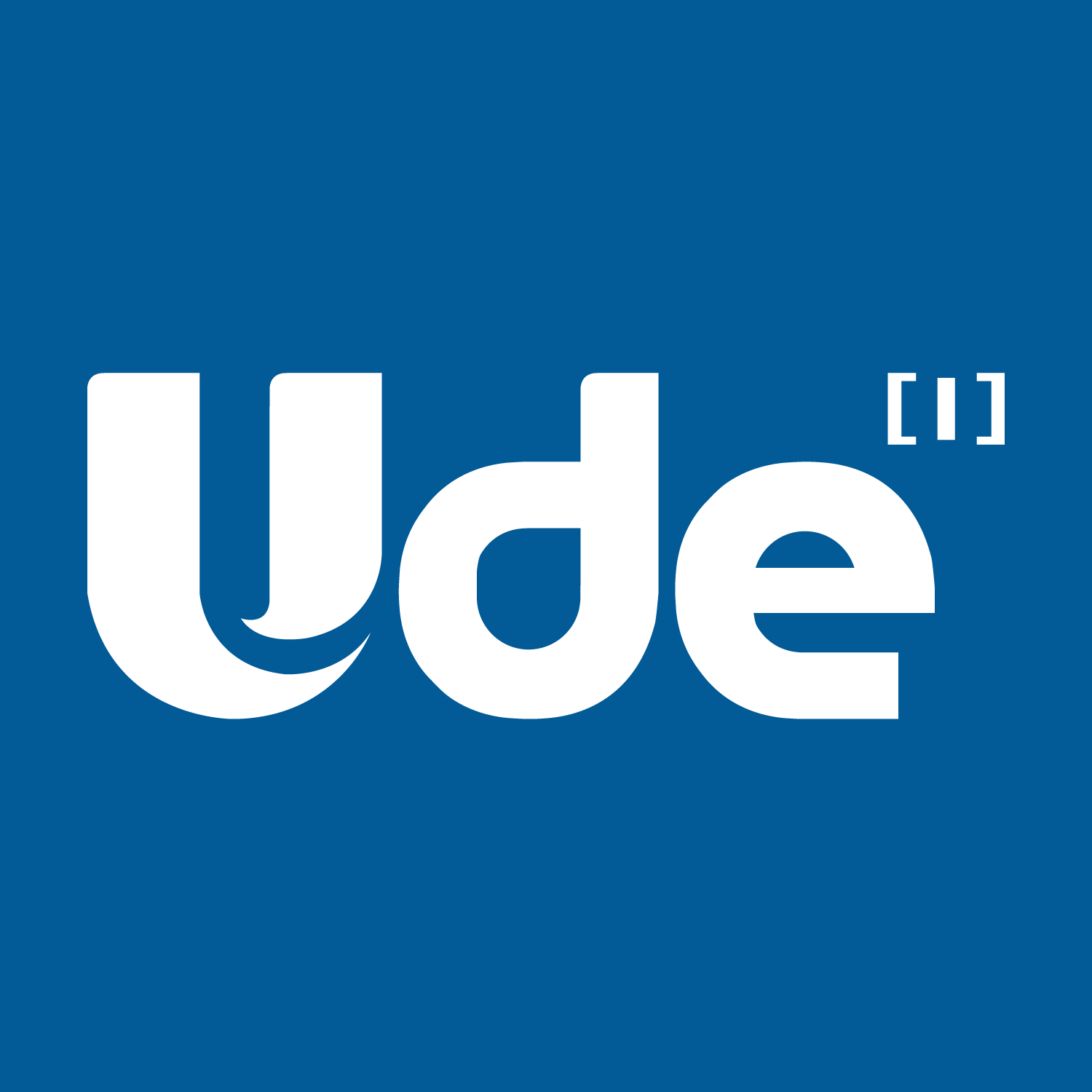





1. Project Overview
The Smart Cultural and Tourism Platform Construction Project aims to achieve the integration, innovation, and practical application of technology, culture, and tourism. It revolves around the concept of "one center, two elements, four dimensions" to understand the cultural demands of the masses and empower them with the choice of cultural services. The project strives to meet the four major needs of the public in the process of providing public cultural services, namely "awareness," "participation," "commentary," and "interaction." It aims to help cultural institutions effectively integrate and coordinate resources to deliver "on-demand supply" of public cultural services. The project seeks to transition from a government-centric approach to one where the public has more say in their cultural consumption, achieving precise matching of cultural supply and demand. It follows an "Internet +" model to construct a digital tourism platform that integrates functionalities such as activity booking, training enrollment, venue reservation, online learning (MOOCs), content creation management, knowledge payment, cultural groups, cultural procurement, cultural broadcasting, cultural tourism institutions (including cultural establishments, main and branch venues, and tourism subsystems), cultural tourism maps, exhibition displays, brand promotion, cultural tourism integration subsystems, volunteer services, user management, big data analysis, and intelligent search. The goal is to enhance public cultural participation, satisfaction, and overall cultural well-being and happiness.
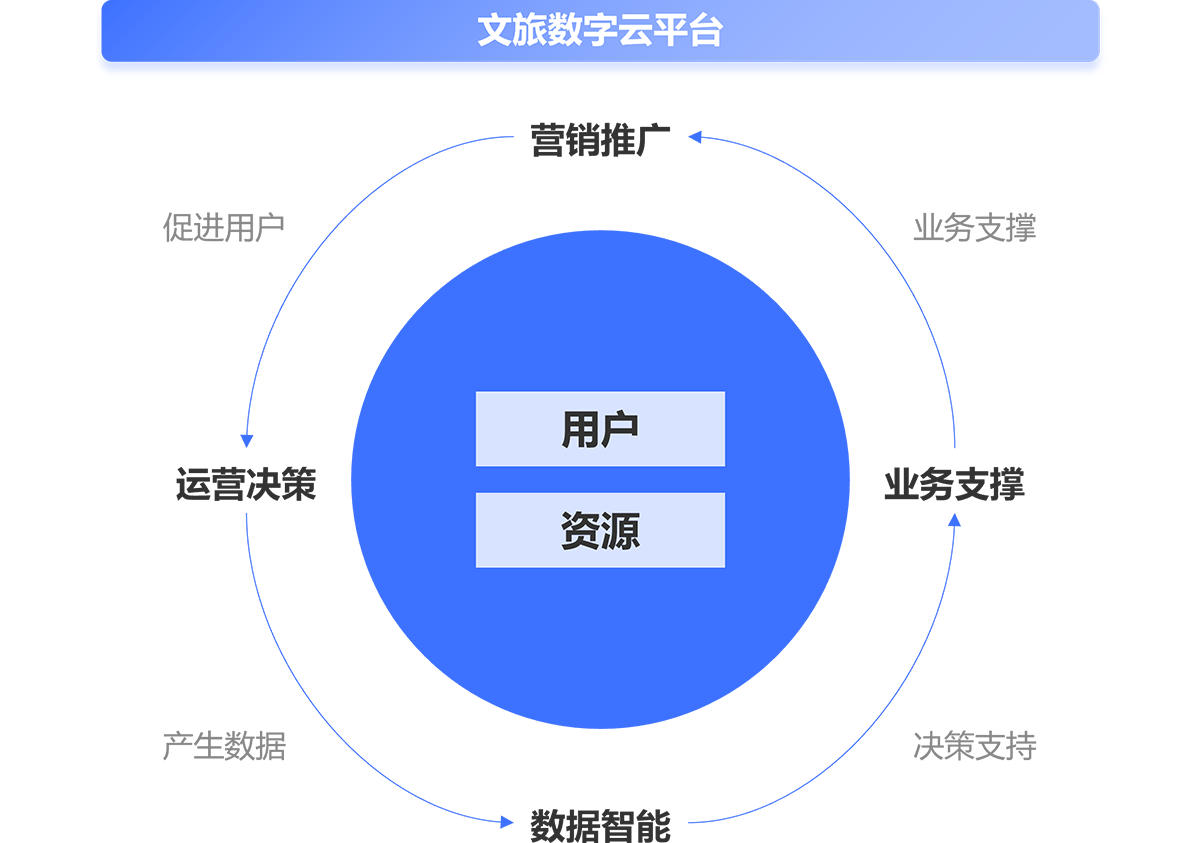
2. Key Functions of the Project
2.1 Platform Management System
1. Branch Institution Management Backend: Branch institutions include other cultural units within the city, as well as branch venues of cultural centers. They operate as subsidiaries of the city's cultural center and have their own dedicated backend systems. The backend allows them to manage their basic information, home page featured images, set up roles and permissions, add institution administrators, publish announcements, and maintain venue information. It also enables the creation of seat maps, the publication of venue rental time slots, and the management of institutional activities. The backend enables the management and maintenance of branch institution information and users, as well as the review of activities and volunteer projects submitted by branch institutions.
2. Institution Management Backend: Third-party institutions that are part of the platform have their own dedicated management backend systems. They can maintain their basic information, change institution administrators, publish announcements, manage cultural ordering, and handle cultural delivery processes.
3. Teacher Management Backend: The platform provides teachers or teacher teams with their own management backends, where they can manage course content, resources, teaching tools, and operational tools.
2.2 Business Support
1. Activity Booking: Display the latest cultural activities organized by various institutions and allow the public to book or participate in activities directly online, either by redirecting to ticket purchasing links or by submitting relevant information.
2. Training Enrollment: Display various cultural training activities organized by institutions and enable enrollment for interested participants.
3. Venue Reservation: Enable institutions to publish information about available venues for rent, including details such as size, equipment capacity, venue images, and specifications. Users can select available venues and submit reservation requests.
4. Online Learning (MOOCs): Display courses created by teachers, allowing users to independently select and study courses of their interest online.
5. Knowledge Payment: Address information gaps during travel experiences through paid knowledge question and answer mechanisms.
6. Cultural Procurement: Connect online and offline channels, with real-time updates on transaction data during live events.
7. Cultural Broadcasting: Integrate with third-party live streaming platforms to showcase and broadcast the latest cultural activities, local cultural events, etc. Users can participate in events by scanning QR codes, and historical broadcasts can be displayed, shared, and evaluated.
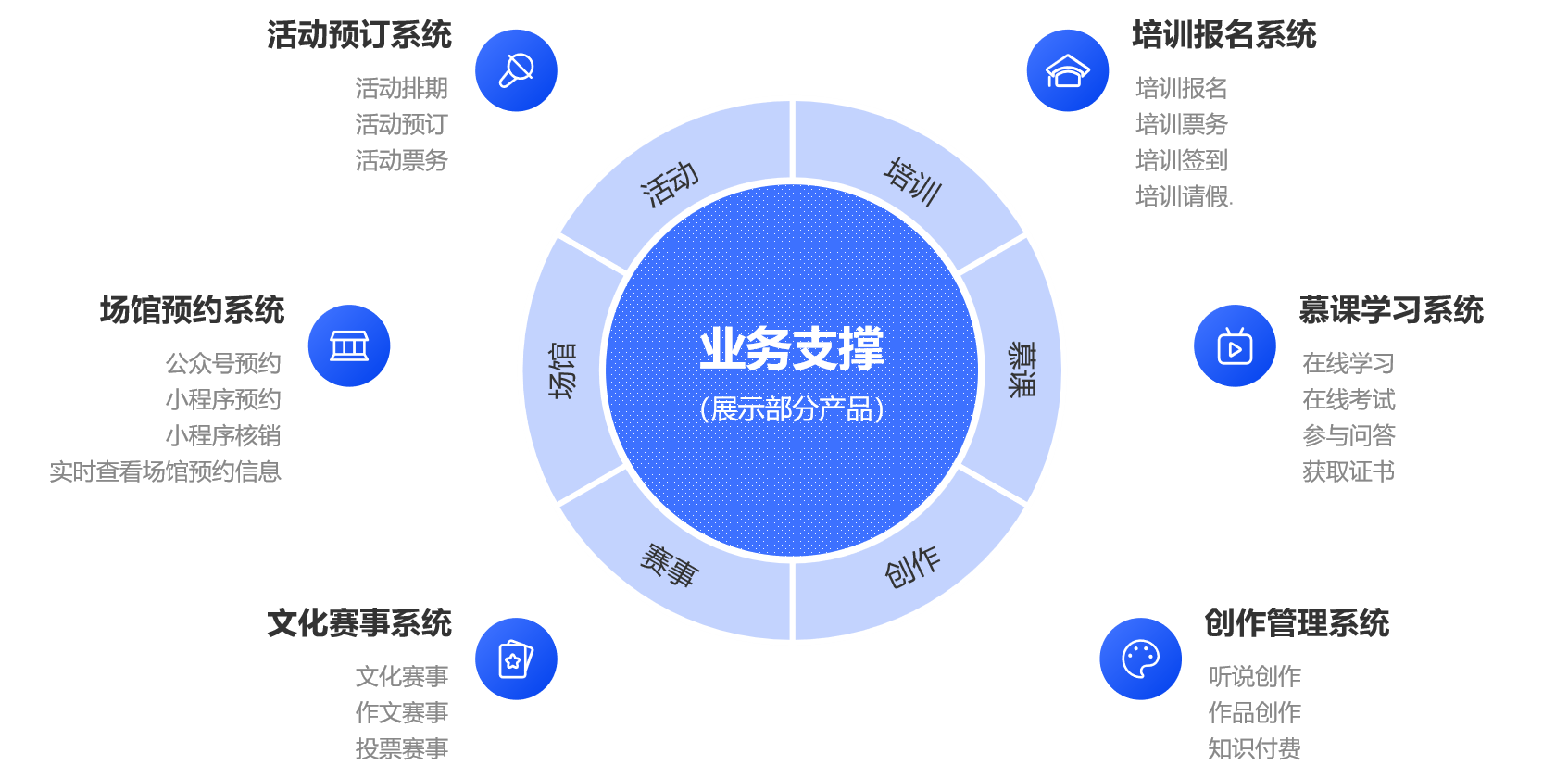
2.3 Operational Decisions
Content: Manage information content such as activity news, training news, venue news, intangible cultural heritage news, event news, MOOC news, and institutional news.
Resources: Manage activity resources, training resources, venue resources, site resources, intangible cultural heritage resources, WeChat resources, MOOC resources, and institutional resources.
Users: Manage membership, family members, loyalty points, reputation scores, coupons, user tags, user profiles, electronic certificates, etc.
Data: Utilize data dashboards, customer flow detection, environmental monitoring, behavior analysis, cultural tourism maps, statistical mini-programs, activity data displays, etc.
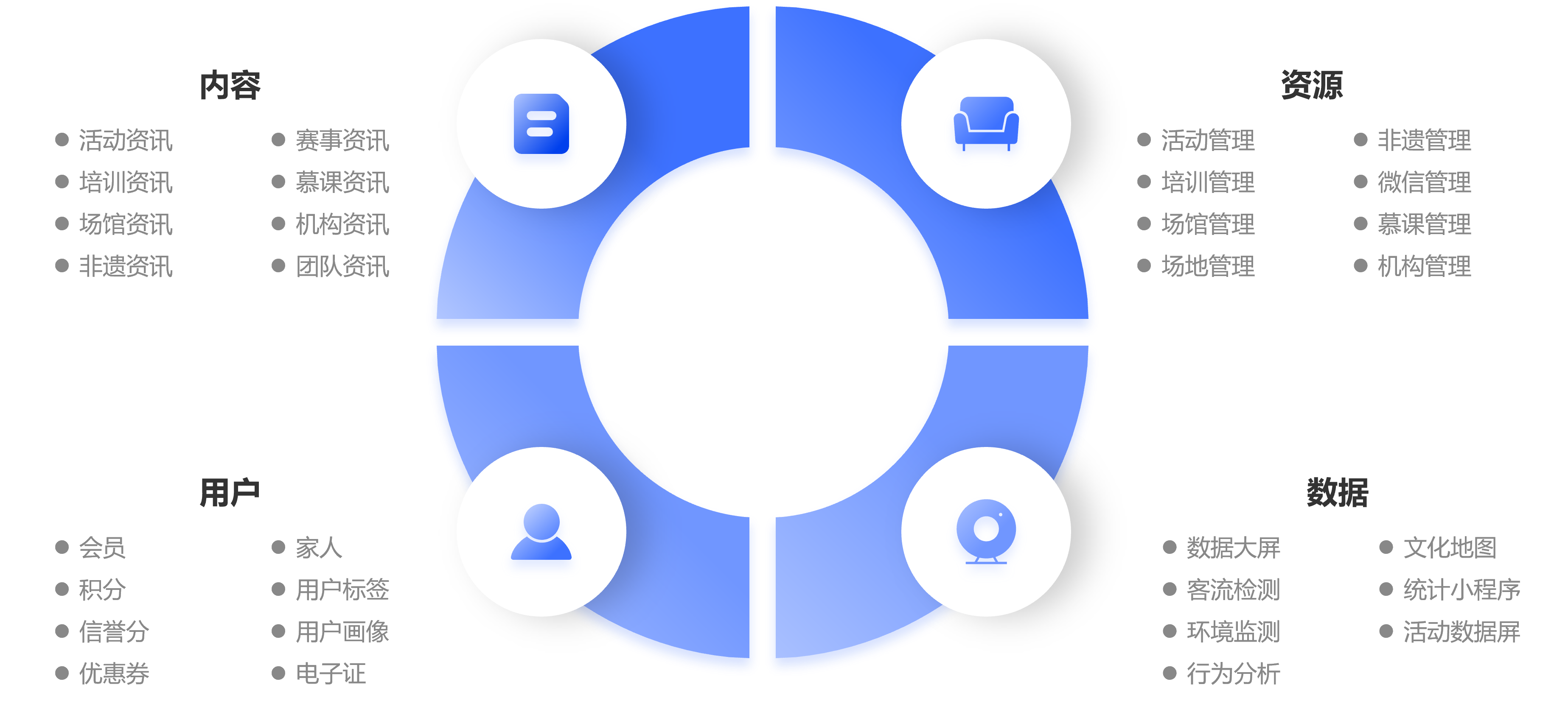
2.4 Marketing and Promotion
1. On-site exhibitions
2. Voting
3. Distribution
4. H5 (HTML5 mobile webpage)
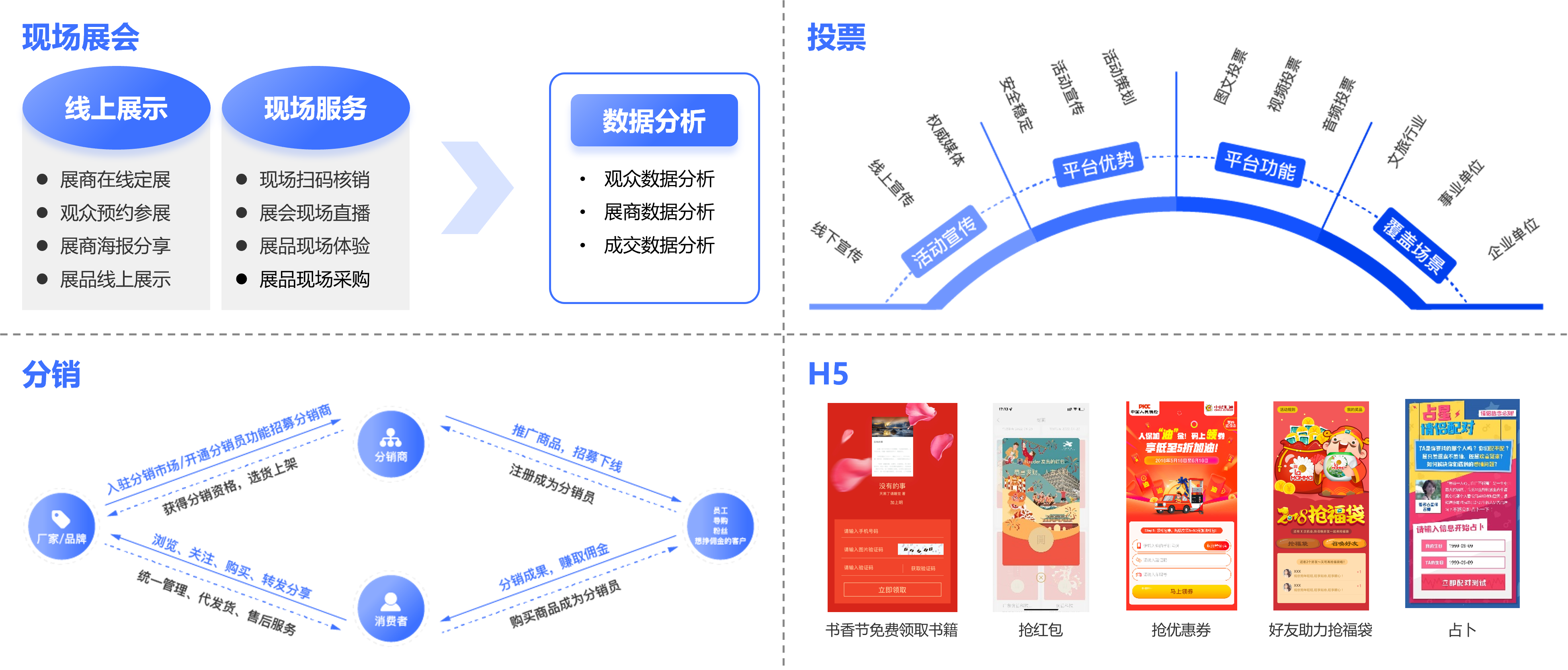
2.5 Data Intelligence
1. Collect and output data from Internet of Things devices such as cameras.
2. Integrate data from platforms such as Douyin (TikTok) and official WeChat accounts.
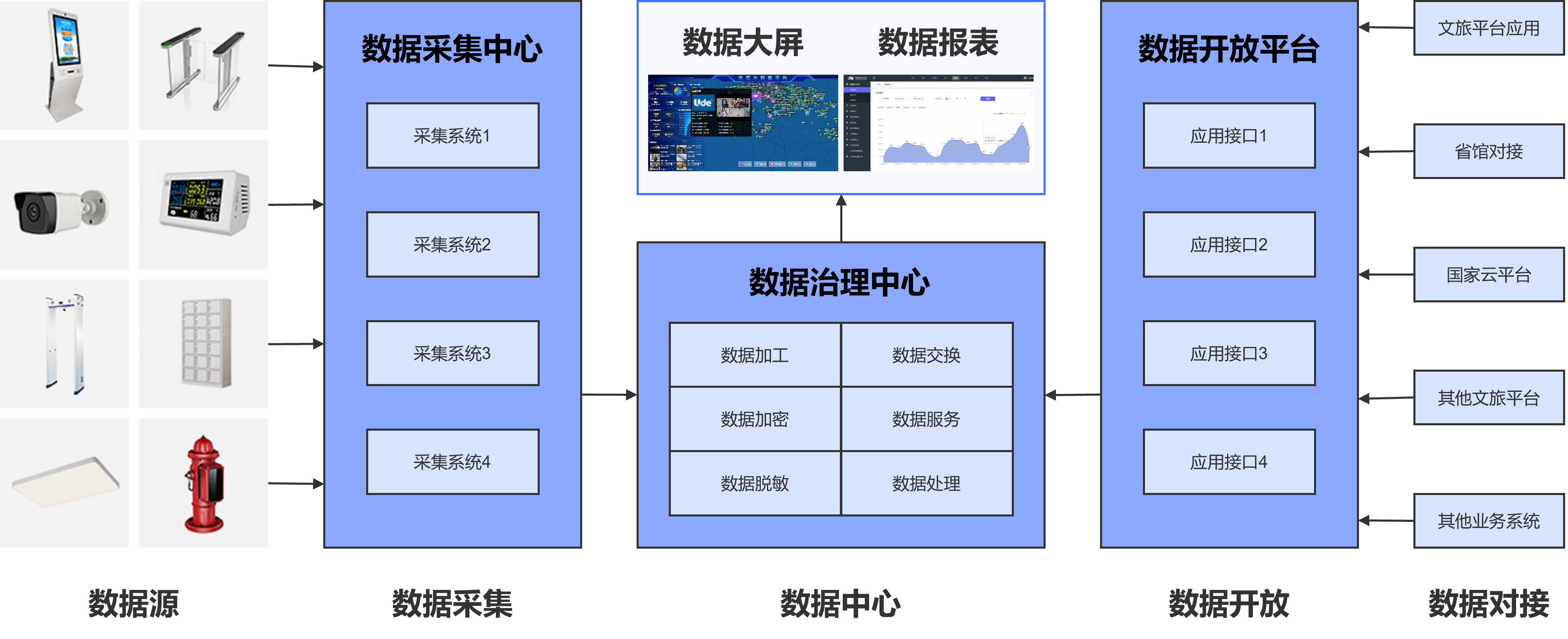
· END ·